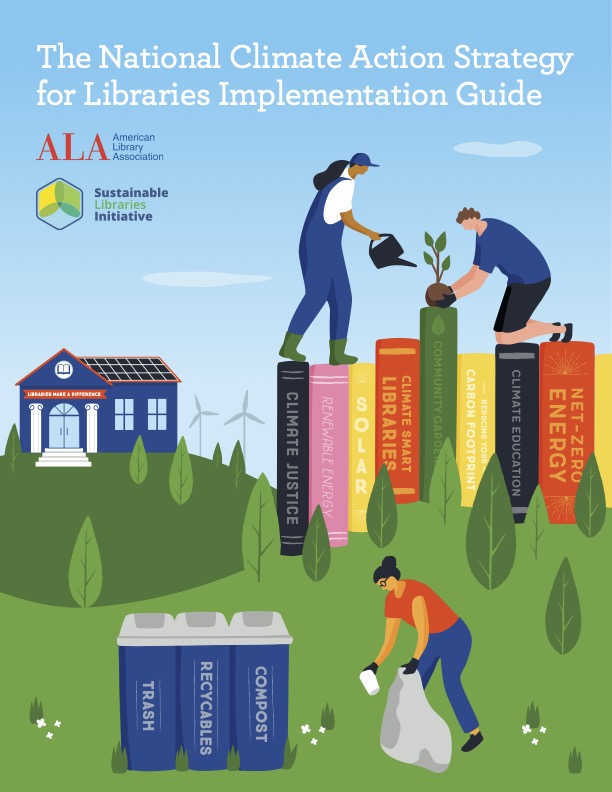74 Results for: rebekkah
From:
To:
Finding Balance | Year in Architecture 2024
LJ’s 2024 Year in Architecture trends see libraries simultaneously designing for pragmatic concerns, such as safety and site constraints, and an equally important quotient of delight—achieving harmony in the process!
Design Trend: Inside Out | Year in Architecture 2024
This year’s crop of libraries demonstrates a continued commitment to the well-being of library workers and patrons through biophilic design, a tried-and-true construct to connect people with nature in hopes of improving human health.
ALA and Sustainable Libraries Initiative Release National Climate Action Strategy | Sustainability
The American Library Association and the Sustainable Libraries Initiative have announced the new National Climate Action Strategy for Libraries and created an implementation guide to help libraries incorporate climate action locally into strategic and facility plans.
National Climate Action Strategy for Libraries Under Development | Sustainability
UPDATE: The ALA-SLI National Climate Action Strategy Working Group will hold an open forum to introduce a draft Climate Action Strategy for Libraries to ALA members, and to solicit feedback from the field, on Thursday, March 14. All library workers and trustees are invited.
The American Library Association and the Sustainable Libraries Initiative have teamed up to create a National Climate Action Strategy for Libraries to be released later this year. Both organizations have been working to raise awareness in the profession for the need to act with urgency to create communities of practice that can help library workers understand the issue and that can provide the practical approaches to manage the predicted impacts and systemic nature of climate change.
Sweet Home Chicago: The 2023 Annual Conference Returns to ALA's Hometown
The American Library Association Annual conference is back in its hometown this year, with a full lineup designed to keep everyone engaged.
One Last Chance | Sustainability
Public and academic libraries should be leaders in moving away from fossil fuels, prioritizing investments in net-zero energy construction, renewable energy, and electric vehicles. This requires commitment from leadership in facility and budget planning. Library administration and governing boards of trustees need to step up to prioritize greenhouse gas emission reduction in their strategic and operational planning.
None of This Would Have Happened If Prince Were Alive
 For listeners seeking a lovable, laughable relationship fiction about marriage, motherhood, and managing both without losing themselves. Recommended for fans of Jennifer Weiner, Emily Henry, and Lisa Roe.
For listeners seeking a lovable, laughable relationship fiction about marriage, motherhood, and managing both without losing themselves. Recommended for fans of Jennifer Weiner, Emily Henry, and Lisa Roe.
Places of Refuge | Editorial
At LJ’s recent Design Institute in Missoula, MT, the term places of refuge came up several times. It was new to me, but the meaning was clear from the context: individual-scale spots within the larger, communal library. But the refuge the library can offer is inherently temporary. For libraries to help make their whole communities places of refuge, libraries need to facilitate long-term planning for resilience to disasters that are more frequent and severe—plus, support government policy changes to slow and perhaps reverse that progression.
Living Our Values Out Loud | Sustainability
The New Canaan Library, CT, is leading the way to address human rights in the building product supply chain.
The Wedding Veil
ALREADY A SUBSCRIBER? LOG IN
We are currently offering this content for free. Sign up now to activate your personal profile, where you can save articles for future viewing









